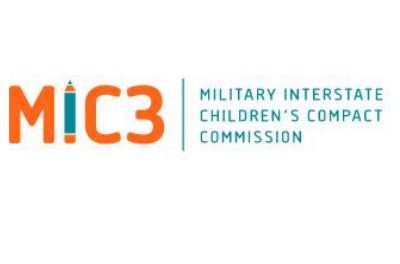Interstate Compact Military Presentation by Rick Masters, General Counsel for MIC3, the Military Interstate Children’s Compact Commission. Includes Question and Answer session about this important legal protection for military-connected children in public schools K-12. Includes a handout for military parents.
Category: Local Education Agency Staff
Working with Military Installations: Tools and Tips for Parent Center Staff
Newly Updated!
Everything from first contact to going through the gate–tips and advice from military family members, parent center staff, and guidelines from Department of Defense and Department of Homeland Security.
Continue reading “Working with Military Installations: Tools and Tips for Parent Center Staff”
Restraint & Seclusion Laws for Each State
U.S. Department of Education Restraint & Seclusion policies by State (external link).
Another resources which has been recommended by several Parent Centers is available through The Autism National Committee (Autcom.org): How Safe is the Schoolhouse? (external link). This resource is updated through July, 2019.
What Does a Parent Center Do?
Federally funded Parent Training and Information Centers (PTIs) are found in every State, the District of Columbia, Puerto Rico, and the Virgin Islands. Large States have more than one PTI. In addition, thirty federally funded Community Parent Resource Centers (CPRCs) focus on unserved or underserved populations throughout the United States and territories. Together, the PTIs and CPRCs (collectively referred to as Parent Centers) can play a vital role in supporting your work with Exceptional Family Members in your communities. The following information is a quick fact sheet on what a federally funded Parent Center is required to do through their grants and some suggestions on how you can utilize them effectively.
How to Use Military Rank and Insignia
The U.S. Armed Forces use rank and insignia to classify and categorize each service member from Private to General. Learning how to recognize and use these identifiers will help the Parent Center staff when working with installation service members.
What does this mean to the Parent Center? A member’s rank/insignia is where they are in the chain of command, what leadership responsibilities they have.
Interstate Compact on Educational Opportunities for Military Children
The Interstate Compact on Educational Opportunities for Military Children was created to provide a smooth transition for military children as their families relocate from installation to installation. “While the Compact is not exhaustive in its coverage, it does address the key issues encountered by military families: eligibility, enrollment, placement and graduation” (NCSL, 2014). The Compact has been created with the hope that students will not lose academic time in transition, obtain an appropriate placement, and be able to graduate on time. Currently, all 50 states and District of Columbia participate in the Compact. Continue reading “Interstate Compact on Educational Opportunities for Military Children”
Online Resources for Military Families
Updated list of links to social media groups and organizations dedicated to military families and their concerns, including those that offer support and information to military families who have children with disabilities.
Department of Defense Education Activity (DoDEA) School System
Department of Defense Education Activity (DoDEA schools) operate in serveral states and US Territories and at installations abroad. This article and linked resources can help you help military families transferring to and from this military education system.
Continue reading “Department of Defense Education Activity (DoDEA) School System”
Role of the School Liaison Officer (SLO)
School Liaison Officers (sometimes just titled “School Liaisons” or “School Support Staff” (SLOs) are the point of contact on an installation for all things school-related and assist families whose children’s education may be affected by military life. They can be a great resource for Parent Centers!
When A Child’s Parent Has PTSD
Reprinted with permission of the US Department of Veterans Affairs.
Jennifer L. Price, PhD
Updated January 3, 2015
Researchers have examined the impact of Veterans’ PTSD symptoms on family relationships, and on children of Veterans in particular. Understanding how these symptoms affect relationships can help families and children of Veterans cope with difficulties, should they arise. Although much of the research described here has been conducted with children of Vietnam Veterans, findings from this body of research may generalize to children of Veterans from other eras as well as non-Veterans with PTSD.

